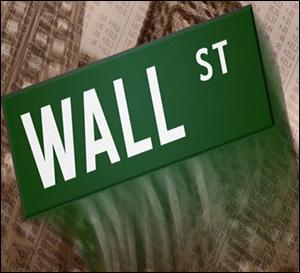By Pam Martens and Russ Martens: April 19, 2016
 Eight long years after the greatest Wall Street crash since 1929 and the ensuing Great Depression, U.S. mega banks on Wall Street still pose a systemic risk to the safety and soundness of banking and the overall financial stability of the United States.
Eight long years after the greatest Wall Street crash since 1929 and the ensuing Great Depression, U.S. mega banks on Wall Street still pose a systemic risk to the safety and soundness of banking and the overall financial stability of the United States.
The public no longer has to guess as to whether the above statement is factual or simply the wild imagining of Wall Street activists. No less than the bank-cozy Federal Reserve confirmed on April 13 that three of the largest Wall Street banks (JPMorgan Chase, Bank of America and Wells Fargo) did not have credible plans to unwind themselves without taxpayer assistance if they were to fail, raising the specter of another epic taxpayer bailout adding to the already staggering $19 trillion national debt, much of which resulted from the last bailout. In the case of JPMorgan Chase, the Federal Reserve and the Federal Deposit Insurance Corporation (FDIC) sent a joint letter with the stunning pronouncement that they have “identified a deficiency” in JPMorgan’s wind-down plan which if not properly addressed could “pose serious adverse effects to the financial stability of the United States.”
Following JPMorgan’s 2012 foray into using its depositors’ money to make wild gambles with derivatives in London (the London Whale saga), the U.S. taxpayer via the U.S. Senate’s Permanent Subcommittee on Investigations spent significant sums investigating how the bank came to lose at least $6.2 billion of depositors’ money on its own wild speculations. At the conclusion of the investigation, which produced a 307-page report, Senator John McCain had this to say at the March 15, 2013 Senate hearing:
“This investigation into the so-called ‘Whale Trades’ at JPMorgan has revealed startling failures at an institution that touts itself as an expert in risk management and prides itself on its ‘fortress balance sheet.’ The investigation has also shed light on the complex and volatile world of synthetic credit derivatives. In a matter of months, JPMorgan was able to vastly increase its exposure to risk while dodging oversight by federal regulators. The trades ultimately cost the bank billions of dollars and its shareholders value.
“These losses came to light not because of admirable risk management strategies at JPMorgan or because of effective oversight by diligent regulators. Instead, these losses came to light because they were so damaging that they shook the market, and so damning that they caught the attention of the press. Following the revelation that these huge trades were coming from JPMorgan’s London Office, the bank’s losses continued to grow. By the end of the year, the total losses stood at a staggering $6.2 billion dollars.”
JPMorgan Chase is the largest bank in the U.S. with more than $2 trillion in assets. And yet it was saved from potentially devastating losses to its depository bank because of inquiring minds, not at its regulators, but at Bloomberg News and the Wall Street Journal. These exotic gambles in derivatives were occurring just four years after the largest Wall Street crash since 1929 and just two years after President Obama assured the country that the 2010 Dodd-Frank financial reform legislation would never allow these types of abuses to happen again.
That was 2013. In 2014, when hundreds of the Dodd-Frank rules had still not been implemented, JPMorgan Chase was charged with two felony counts for its involvement in the Bernie Madoff fraud. A lenient Justice Department brought no criminal charges against any individual at JPMorgan and gave it a deferred prosecution agreement and a two-year probation. The agreement was signed between the Justice Department and JPMorgan on January 6, 2014. But on May 20, 2015, JPMorgan Chase, along with other banks, was charged with a new felony count, to which it admitted, for its involvement in rigging foreign currency markets.
This pattern of serial crimes at JPMorgan Chase and other Wall Street banks is why presidential candidate Senator Bernie Sanders of Vermont can say with authority and conviction that the business model of Wall Street is fraud.
Hillary Clinton, vying for the Democratic nod for President while taking millions of dollars in campaign funds from the felonious Wall Street banks, thinks Dodd-Frank reform is working just fine and simply needs some tinkering around the edges. No amount of facts to the contrary or serial charges of new crimes emanating from Wall Street will alter her view. She also refuses to support the restoration of the Glass-Steagall Act, which would separate banks holding insured deposits from their gambling casino cousins – legislation which protected the U.S. banking system and made it the envy of the world for 66 years until it was repealed under the Bill Clinton administration in 1999.
Hillary is also clinging desperately to the nutty proposition that the big banks didn’t cause the 2008 Wall Street crash, buttressed by the increasingly desperate sounding New York Times columnist Paul Krugman, who some suspect may be auditioning for a role in Hillary’s cabinet were she to become the next President.
Senator Sanders has made breaking up the dangerous, too-big-to-fail banks and restoring the Glass-Steagall Act a centerpiece of his campaign platform. Today, in the New York primary, that issue is taking center stage as is the issue of whether Hillary should be asking voters to just trust her as she continues to feed her campaign with the ill-gotten gains from Wall Street abuses.

